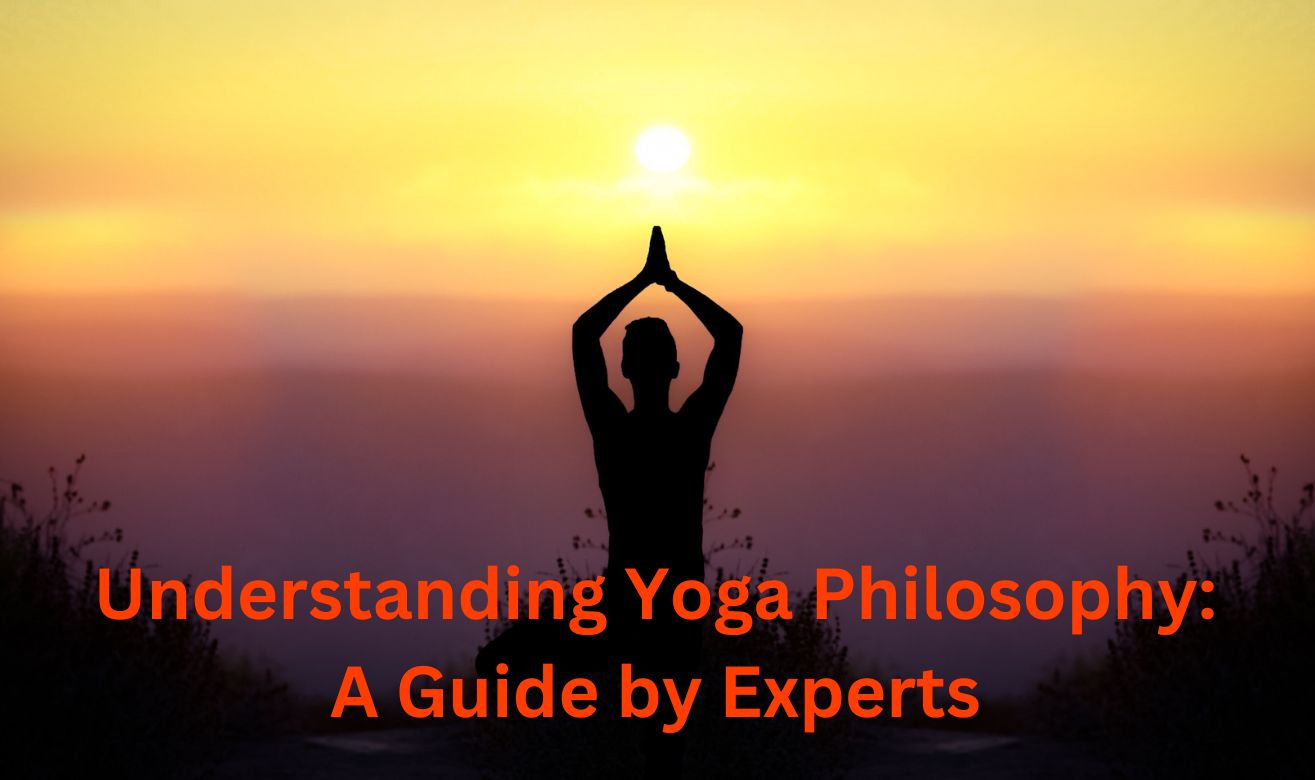Yoga is not just a posture, it’s a philosophy that leads a practitioner on a path of self-realization and liberation.
Ruled by ancient Indian philosophy, yoga philosophy combines ethics, psychology, and spirituality, providing insight into awareness and moving beyond pain.
Knowing the philosophical backdrop for modern practitioners turns yoga from a physical practice to a lifestyle.

What Is Yoga Philosophy?
Origins and Historical Roots
The philosophies behind Yoga developed around 3000 BC from periods beginning with the Vedic texts and extending through the Upanishads.
These scriptures shared the Ultimate Truth. For instance, the Self as soul (Atman) with Universal Self (Brahman).
The development of Yoga into its current structural systems culminated during the evolution of different schools in Patanjali’s Yoga Sutra.
Core Concepts of Yoga Philosophy
One of the essential facets of Yoga Philosophy teaches that the misconception about ourselves leads to psychological distress.
Principles like Karma (Actions and Outcomes), Samsara (cycle of rebirth), and Moksha (liberation) offer a set of spiritual bioevolution principles.
The final achievement is self-realization, awareness of one’s eternal, unchanging, and unchangeable self far beyond the ego and mind.
Importance in Modern Yoga Practice
Many of you come to practice Yoga to maintain your physical health, but it goes much further beyond this, and its potential is in holistic change.
Added to an individual’s contemporary life, yoga philosophy promotes emotional balance, a moral way of living, and spiritual awareness.
Practitioners adopt a life that combines three essential elements, which are purpose, presence, and compassion.
The Six Schools of Indian Philosophy
Overview of the Darshanas
Indian Philosophy organizes itself through six fundamental schools of thought, which use the term darshanas, meaning way of seeing, to describe them.
The six Indian Classical theories of metaphysics include Nyaya (logic), Vaisheshika (atomism), Samkhya (cosmic dualism), Yoga (practical spirituality), Mimamsa (ritualism), and Vedanta (non-dualism).
Though varied, all seek to enable individuals to perceive the nature of reality and self.
Where Yoga Fits Within These Philosophical Systems
Yoga is closely related to Samkhya, which sees reality in terms of two principles. Pure Consciousness (Purusha) and matter (Prakriti).
Whereas Samkhaya is more analytical, Yoga is practical in its methods, such as meditation and disciplines of the moral law, being designed to liberate Purusha from the encumbrances of Prakriti.
It integrates theory and practice, giving a route to the immediate experience.
The Eight Limbs of Yoga (Ashtanga Yoga)
Yama and Niyama—Moral and Personal Disciplines
The basis of yoga is in living a moral life. Yamas (restraints) include non-harm, truth, non-stealing, moderation, and non-possessiveness.
Niyamas (observances) practice self-discipline via hygiene, cleanliness, contentment, self-control, self-study, and dedication.
Together, they cleanse the mind and establish a steady base for the spirit cultivation.
Asana and Pranayama – Physical and Breath Control
Asana or position resettles the body and mind for meditation. In classical texts, it means not physical flexibility but a settled, comfortable seat for the inner work.
Breath regulation, Pranayama, gives the energy to control the energy and calm the mind, making it ready to pursue deeper states of mind.
Pratyahara to Samadhi – The Path to Liberation
The inner journey starts in Pratyahara, the detachment from sense pleasures. This results in Dharna (Focus), Dhyana (Meditation), and Samadhi (Absorption) finally.
In Samadhi, the ego is eliminated, and the practitioner experiences the unity with the true self goes beyond the dichotomy, and is freed.
Key Texts That Shape Yoga Philosophy
The Bhagavad Gita
It is a 700-verse scripture that is a battlefield discourse between Krishna and Arjun.
It presents three principal yogic paths: Karma Yoga (unselfish action), Bhakti Yoga (contemplation), and Jnana Yoga (wisdom).
The Gita offers you the way to live with a sense of purpose, duty, and detachment, which remains grounded in the soil.
The Yoga Sutras of Patanjali
Formulated approximately 200 BCE, Patanjali’s Yoga Sutra is the basis of the yoga tradition. They define yoga as the repression of mental modifications (chitta vritti nirodha) and propose a fully organized means of achieving liberation (Ashtanga Yoga).
The Upanishads and Vedas
Upanishads are deeply mystical and also considered to be a treatise of philosophy that exist at the endpoints of the Vedas, which are India’s earliest scriptures.
They delve into deep topics such as soulless, rebirth, cosmic unity, and so on. These texts ranged in their views of the metaphysical.

How Philosophy Enhances Yoga Practice
Beyond Physical Postures
Learning yoga’s philosophy raises the exercise to a means of self-discovery. Unlike strength or alignment, philosophical insights ask practitioners to pay attention to their minds, behave honestly, and manifest inner presence in every action.
Cultivating a Yogic Lifestyle
Yoga philosophy is practiced as much as yoga is practiced on the mat. It promotes simplicity, mindful consumption, honest talk, and emotional control.
When we are the embodiment of the yamas and niyamas, practitioners bring to life a life of harmony and inner peace.
Deepening Self-Awareness and Inner Peace
Philosophical inquiry sharpens introspection. It enables individuals to identify compulsive, patterned, and conditioned responses and to learn to change them.
Utilizing self-study (svadhyaya), meditation, and ethos, one realizes a further self beyond the realm of thoughts, roles, and likes.

Learning Yoga Philosophy in a 300-Hour YTT Program
Structured Learning from Experts
Heading Advanced Yoga Teacher Training (AYTT) Program, particularly the 300-Hours certification, yoga philosophy modules are covered deeply.
Under the guidance of experts or Yoga Professionals, students can explore classical texts, Indian Metaphysics, and applied spirituality in a structured, supportive environment.
Applying Philosophy in Teaching and Daily Life
Teachers equipped with that knowledge can provide full counselling to the students, providing insight into the mental, emotional, and ethical living.
But personally, this knowledge helps to make better decisions to be resilient or resistant and to have more contended mind when dealing with everyday challenges.
Why Rishikesh is Ideal for Studying Yoga Philosophy
Rishikesh, a land of Yogis, is situated in the Himalayas by the Ganges. Rishikesh is steeped in yogic tradition.
It is the location of some of the most revered ashrams, great spiritual leaders, and peaceful introspection.
Here, studying is connected to the people, culture of the village, and understanding of yoga and its roots.
Final Thoughts on Embracing Yoga Philosophy
The teaching of Yoga philosophy is not this or that system of knowledge. It is a way of life that creates clarity, compassion, and connection.
As you apply these teachings, yoga turns out to be a lifelong practice that steers you through knowledge of bodily, mental, and spiritual transformation.
When a teacher of a student fully embraces the depth of attitudes, yoga becomes more than just a practice, it becomes a way of life.
